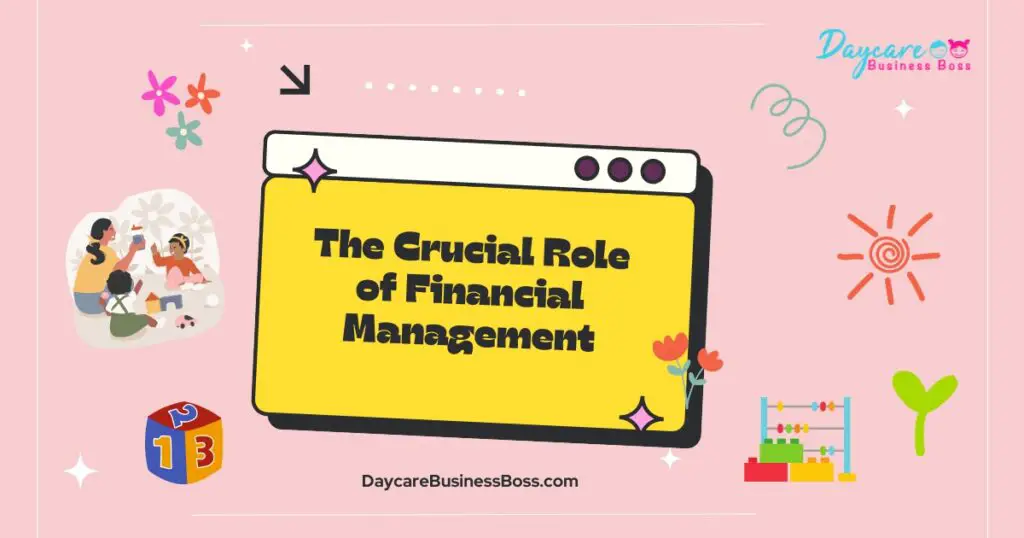Adult daycare centers are beacons of assistance for the elderly and those with disabilities in the complex tapestry of the healthcare landscape. These facilities, which provide a combination of compassionate care and stimulating activities, are critical in improving the well-being of their customers. The idea of profit margins, which monitor the balance between revenue and expenses and have a significant impact on the long-term profitability of these centers, is at the heart of this financial component.
The most useful insight about adult daycare profit margins is the wide range, typically between 10% and 40%. Factors such as location, size, services offered, and operational efficiency impact profitability. Careful financial management and quality services are crucial for achieving higher margins.
The Wide Range of Adult Daycare Profit Margins
A prominent and intriguing characteristic of the adult daycare center landscape is the wide variation in profit margins. While several industries may display a degree of regularity in their financial returns, the field of adult daycare stands apart, with a range of profit margins that can diverge dramatically. This uniqueness calls for a closer look at the elements that contribute to this volatility and emphasizes the significance of careful analysis.
Adult daycare centers do not adhere to a single profit margin criterion. Instead, they cover a range of 10% to 40%, giving a wide range that demands careful inspection. This range is distinguished by its breadth, which encompasses margins spanning a threefold difference. Such wide variation can be traced to a confluence of complex elements at work in the sector.
The location and size of the adult daycare facility are the first critical factors impacting these varied profit margins. Due to increased demand and presumably greater capacity to accommodate clients, centers located in excellent urban areas tend to earn better profit margins. Smaller facilities in less densely populated locations, on the other hand, may struggle to maintain comparable margins due to lower clientele and, as a result, fewer revenue streams.
The range of services provided is critical in setting profit margins. Centers that provide specialized care services, such as medical support, therapeutic activities, or customized attention, frequently charge greater prices from clients, which contributes to bigger profit margins. Facilities that merely provide basic care and recreational activities, on the other hand, may find their margins more constricted.
Profit margins in this industry are also heavily influenced by regulatory and compliance considerations. Stringent licensing regulations and thorough inspection may result in greater operational costs, thereby limiting profit margins. Those operating in locations with more relaxed restrictions, on the other hand, may find it easier to maintain a healthier balance between expenses and revenues.
As a result, the significant range in profit margins in adult daycare centers emphasizes the industry’s multidimensional structure. Operators wishing to build long-term financial viability must carefully examine location, service offerings, and regulatory dynamics. When analyzing prospects in this industry, prospective investors and stakeholders must appreciate the importance of margin variety.
Read more about: How to Start a Childcare business
Factors Influencing Profit Margins
The enormous landscape of adult daycare centers is distinguished by a notable disparity in profit margins, a complex interaction of elements that intimately shapes the financial outcomes within this industry. This significant variety is the result of a plethora of elements combined to portray a dynamic and complex arena.
The geographical location of a facility is the most important of these criteria. Urban areas with greater living costs and increased demand for senior care services frequently provide a favorable atmosphere for adult daycare centers to develop. In such locations, these institutions can leverage families’ willingness to invest more in the well-being of their elderly loved ones, allowing them to charge premium rates. This geographical variance in economic dynamics has an undeniable impact on profit margins.
Another important factor that influences profit margins is the size of a facility. Larger facilities benefit from economies of scale, a phenomenon in which the cost per individual served reduces as the number of clients increases. This efficiency-driven benefit allows larger centers to reduce operational expenses, increasing overall profitability. Smaller facilities, on the other hand, may struggle to attain the same level of cost optimization due to restricted clientele and resources.
The breadth and depth of services offered by an adult day care center have a significant impact on its financial condition. Establishments that provide a diverse range of services, such as medical treatment, therapeutic sessions, transportation services, and a variety of interesting recreational activities, not only attract a more diverse clientele but may also fetch higher fees. This greater range of services raises the center’s perceived value, resulting in increased revenue streams and, as a result, higher profit margins.
Profit margins are influenced significantly by operational efficiency. Internal process efficiency, skilled employee scheduling, and prudent resource allocation can all considerably reduce overhead costs. Administrative job management skills and precise record-keeping help to reduce waste, redundancy, and cash leakage, ultimately improving the bottom line.
The Crucial Role of Financial Management

Adult daycare profit margins are weaved not only by local variations, size dynamics, and service scope but also by a critical thread of smart financial management. Within this complicated matrix, it is clear that growth is dependent on a well-crafted financial plan that includes several critical factors, each of which contributes to the overall profitability and sustainability of these businesses.
The discipline of budgeting is at the heart of this strategic framework. Adult daycare centers must organize their financial activities thoroughly, allocating resources in a way that matches their operational goals. A well-planned budget acts as a road map, directing spending, investment decisions, and revenue targets. A budget not only helps to control expenditures by establishing financial boundaries and expectations, but it also acts as a foundation for evaluating the effectiveness of financial efforts.
Budgeting is not complete without cost analysis. Adult daycare centers must do rigorous cost-cutting analyses to find areas where expenses can be reduced without affecting the quality of care and services. Cost-cutting options must be identified through a thorough evaluation of operational processes, procurement methods, and resource allocation. This vigilance contributes to simplifying the cost structure and developing a leaner operational model, which has a direct impact on profit margins.
Prudent financial judgments are yet another pillar of effective financial management. This requires discerningly examining potential investments, expansion endeavors, and strategic relationships. Robust financial decision-making considers possible profits, related risks, and alignment with the center’s overall goals. The capacity to make sound financial decisions is critical in establishing long-term profitability and growth.
This management method relies heavily on a constant evaluation of financial records and performance metrics. Monitoring income statements, balance sheets, and cash flow reports regularly provides insight into the center’s financial health. Disparities, trends, and anomalies can be discovered, allowing for informed course corrections and changes. This proactive approach enables operators to respond quickly to developing challenges and opportunities.
Strategic pricing is the final thread in the fabric of effective financial management. Choosing the appropriate pricing point for the services offered is a difficult process that necessitates a fine balance between covering costs and keeping competitive in the local market. Underpricing reduces potential profits, but overpricing risks alienating potential customers. Thorough market research and a thorough awareness of the local economic context are essential for developing pricing strategies that strike this balance.
Quality Services as the Cornerstone
The underlying value of providing high-quality services inside adult daycare centers cannot be stressed in the persistent pursuit of increased profit margins. These facilities are concerned with the business of care, and the quality of care provided to clients serves as a linchpin, having a direct impact on the establishment’s reputation, client satisfaction, and, as a result, financial prosperity.
The arena of assuring quality services includes a complicated strategy with multiple dimensions. The most important of these is having a well-trained and compassionate workforce. Personnel who are not only skilled in their roles but also have a deep awareness of their client’s specific wants and preferences cannot be overstated. Such employees can adjust their care approach to each individual’s specific needs, resulting in higher customer satisfaction and a higher possibility of client retention.
Expanding the range of activities and therapies available is a strategic strategy for improving the quality of services provided by adult daycare centers. Beyond simply attending to customers’ physical well-being, these facilities that extend emotional and cognitive involvement through a variety of activities carve out a distinct niche in a competitive industry. Clients’ perceived value of the center’s offerings can be considerably increased by catering to their holistic wellness by providing not just recreational activities but also therapeutic interventions.
Another critical aspect of this quality goal is client involvement. Creating an environment that allows clients and their families to give feedback can provide crucial insights into areas that need to be improved. This can be accomplished by instituting frequent client surveys, open forums, and specialized communication channels. Adult daycare centers build a sense of transparency and collaboration by giving clients a voice and actively seeking their opinion, cementing the connection of trust and highlighting the facility’s unwavering commitment to providing excellence.
Read more about: Insightful Foundations: The Cornerstone of Baby Daycare Market Research
Strategies for Enhancing Profit Margins
Beginning the quest to increase profit margins in adult daycare centers necessitates a complex strategy that includes insightful planning and prudent implementation. This initiative is predicated on a comprehensive assessment of the center’s current scenario, followed by strategic interventions influenced by market complexities and customer needs.
Conducting a detailed examination of the facility’s current state is a critical first step in this effort. This includes a thorough examination of the elements that determine profit margins, such as location, size, and the range of services offered. Gaining a thorough understanding of local market dynamics is also critical since this knowledge drives pricing strategies and service differentiators. A thorough assessment of the competitive landscape is required, as it provides information on strengths, weaknesses, opportunities, and threats.
Improving operational efficiency is a strategic imperative in margin expansion. This necessitates a thorough reevaluation and improvement of internal systems. Strategic waste reduction, both in terms of resources and time, can have a major impact on operational expenses. The incorporation of technological solutions can catalyze this improvement. Adult daycare centers can streamline administrative tasks by automating record-keeping, scheduling, and communication, freeing employees from monotonous jobs and redirecting their energies toward more value-added responsibilities.
Collaboration with local healthcare providers and community organizations is another way to increase profit margins. Collaboration with medical practitioners and relevant community institutions can provide access to additional resources, expand the range of services available, and develop a strong network that encourages referrals. These agreements not only broaden the spectrum of care but also help to increase the center’s clients.
Diversification techniques also have the potential to boost profit margin expansion. This could entail the implementation of bespoke programs designed to satisfy the needs of specific customer groups. Offering dementia care or post-surgery rehabilitation programs, for example, can meet specific needs while also creating new revenue streams. However, entering such sectors necessitates a thorough understanding of associated costs as well as a well-calibrated alignment with current market demand to assure the feasibility of such projects.
Frequently Asked Questions

What is the normal profit margin range for adult daycares?
Adult daycare profit margins can vary greatly, often lying between 10% and 40%. This broad range is impacted by factors such as location, size, services provided, and operating effectiveness.
How do variables such as location and size affect profit margins?
Profit margins are heavily influenced by location. Centers located in areas with higher living costs or more demand for services may be able to charge higher fees, affecting profitability. Size is also an important consideration, as larger facilities can benefit from economies of scale, lowering costs per customer served.
What are some ways that adult daycare centers can increase their profit margins?
Adult daycare centers can increase profit margins by practicing prudent financial management and providing high-quality services. Strategic pricing, operational efficiency improvements, service diversification, collaborations with healthcare providers, and keeping open communication with clients for continual improvement are all part of this.
To learn more on how to start your own daycare checkout my startup documents here.
The information provided by DaycareBusinessBoss.com (“The Site”) is for general informational purposes only. All information on the Site is provided in good faith, however, we make no representation or warranty of any kind, express or implied, regarding the accuracy, adequacy, validity, reliability, availability or completeness of any information on the Site. Under no circumstance shall we have any liability to you for any loss or damage of any kind incurred as a result of the use of the Site or Reliance on any information provided on the Site. Your use of the Site and your reliance on any information on the Site is solely at your own risk.
This blog post is for educational purposes only and does not constitute legal advice. Please consult a legal expert to address your specific needs. Terms and Conditions. (https://daycarebusinessboss.com/terms-conditions/)

Meet Shawn Chun: Entrepreneur and Childcare Business Fan.
I’m a happy individual who happens to be an entrepreneur. I have owned several types of businesses in my life from a coffee shop to an import and export business to an online review business plus a few more and now I create online daycare business resources for those interested in starting new ventures. It’s demanding work but I love it. I do it for those passionate about their business and their goals. That’s why when I meet a childcare business owner, I see myself. I know how hard the struggle is to retain clients, find good employees and keep the business growing all while trying to stay competitive.
That’s why I created Daycare Business Boss: I want to help childcare business owners like you build a thriving business that brings you endless joy and supports your ideal lifestyle.

